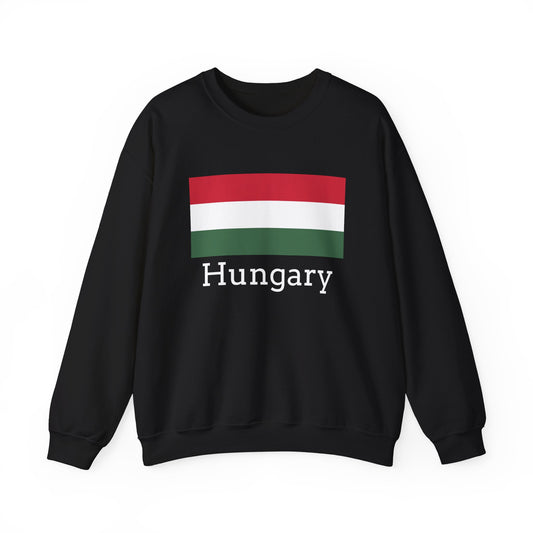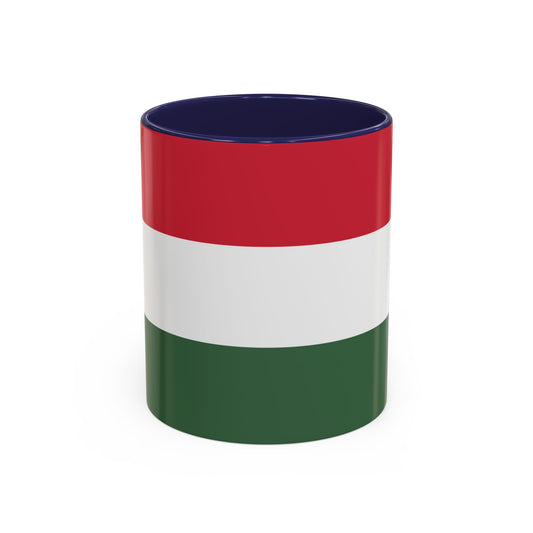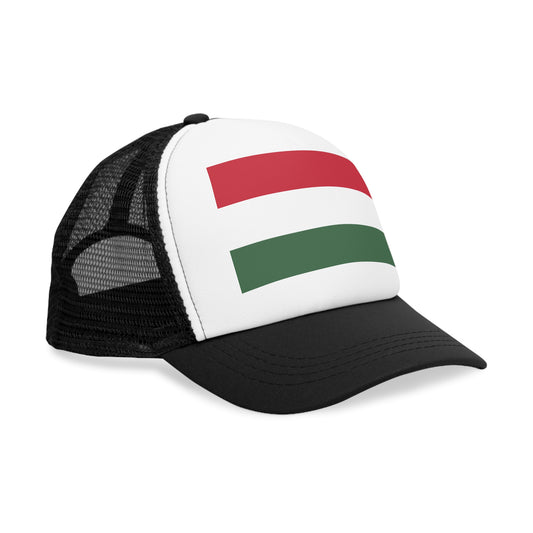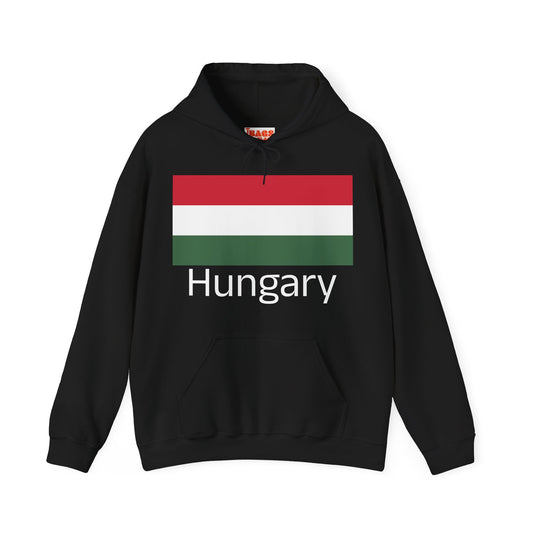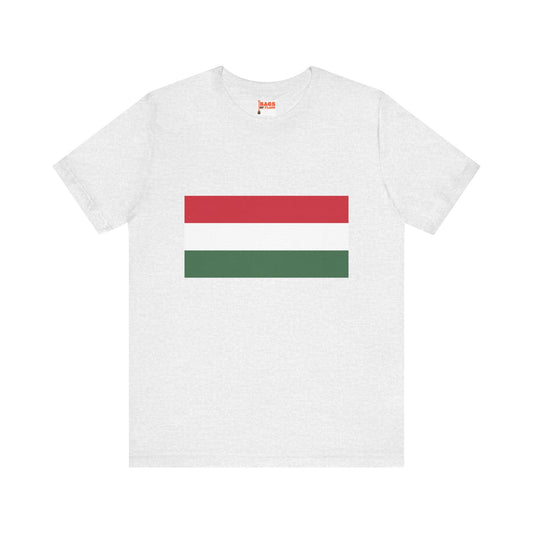-
Hungary Flag Sweatshirt
Regular price $34.15 USDRegular priceUnit price / per -
Hungary Sweatshirt
Regular price $34.15 USDRegular priceUnit price / per -
Hungary Pillow
Regular price $22.65 USDRegular priceUnit price / per -
Hungary Backpack
Regular price $59.79 USDRegular priceUnit price / per -
Hungary Leather Patch Hat
Regular price $18.85 USDRegular priceUnit price / per -
Hungary Mug
Regular price $11.65 USDRegular priceUnit price / per -
Hungary Trucker Cap
Regular price $14.90 USDRegular priceUnit price / per -
Hungary Hoodies
Regular price $34.40 USDRegular priceUnit price / per -
Hungary T-shirts
Regular price $22.79 USDRegular priceUnit price / per -
Hungary Flag Hoodies
Regular price $34.40 USDRegular priceUnit price / per -
Hungary Flag on T-shirt
Regular price $22.79 USDRegular priceUnit price / per
Collection: Hungary
The Hungarian flag symbolizes pride and heritage for the Hungarian people. Its vibrant red, white, and green colors represent the country's rich history and culture. We will explore the design, history, symbolism, and current relevance of the Hungary flag and some lesser-known facts about it.
Overview of the Hungary Flag's Design and Colors

The Hungary flag is characterized by its simple yet profound three-stripe design, each stripe equally sized but distinct in color: red on the top, white in the middle, and green on the bottom. These colors are vivid, eye-catching, and imbued with significant meaning. Red symbolizes the strength and bravery of the Hungarian people, a nod to their spirited history and the blood shed for their country's freedom. White represents purity, honesty, and the desire for peace, reflecting the core values and aspirations of the nation.
The green stripe, symbolic of Hungary’s fertile lands, emphasizes the importance of agriculture and the country's natural beauty. This tricolor scheme powerfully represents Hungary’s national identity and the enduring spirit of its people. The arrangement of colors in horizontal bands gives the flag a sense of balance and harmony, mirroring the country's aspirations for unity and stability.
Historical Context: The Evolution of the Hungary Flag

The origins of the Hungary flag can be traced back to the revolutions and uprisings of 1848, a period marked by the struggle for independence and national autonomy across Europe. The French Revolution inspired the tricolor design, embodying the principles of liberty, equality, and fraternity that resonated deeply with Hungarian revolutionaries. Initially, the flag served as a potent symbol of rebellion and the fight against Habsburg rule, quickly becoming a unifying emblem for the nation's cause.
Throughout the subsequent years, the flag's significance and design were influenced by Hungary's turbulent political landscape, including periods of foreign domination, the establishment of the Austro-Harian Empire, and the profound changes following both World Wars. In 1957, amid the post-war reconstruction and the establishment of a socialist government, the Hungary flag was officially adopted in its current form, shedding any previous symbols of monarchy or foreign influence that had been integrated into earlier versions.
This evolution reflects Hungary's complex history, mirroring the nation's enduring quest for sovereignty and identity. The flag, with its deep-rooted symbols and colors, stands as a testament to the resilience and unity of the Hungarian people through centuries of change.
Symbolism Embedded in the Hungary Flag
The symbolism of the Hungary flag is deeply intertwined with the nation's heritage and values. Each color on the flag carries a specific meaning that reflects the collective identity and aspirations of the Hungarian people. The red stripe is symbolic of courage and the sacrifices made throughout Hungary's history, particularly the bloodshed in pursuing freedom and independence. White signifies the desire for peace, faithfulness, and integrity that has guided the nation through its diverse history.
Finally, the green stripe represents hope and the fertile lands that have sustained the country and underscored the importance of nature and agriculture in Hungarian culture. Together, these colors create not just a visually striking banner; they weave a narrative of resilience, purity, and renewal that resonates with Hungarians today. This tricolor design, adopted amidst the fervor of revolution, has come to symbolize the enduring spirit and unity of the Hungarian people, transcending its origins to become a timeless emblem of national pride.
The Current Relevance of the Hungary Flag
Today, the Hungary flag remains a vibrant emblem of the nation’s identity, frequently seen on various occasions ranging from national holidays and official ceremonies to international sporting events. Its presence evokes a sense of patriotism among Hungarians and reminds them of the country’s journey toward sovereignty and unity. The flag is especially prominent on October 23rd, commemorating the Hungarian Revolution of 1956 against Soviet rule, where it symbolizes the resilience and courage of the Hungarian spirit.
In addition to its ceremonial use, the flag has found a place in the hearts of the Hungarian diaspora worldwide, symbolizing a connection to their homeland and cultural heritage. It adorns classrooms, public buildings, and homes within Hungary, serving as a daily reminder of national pride and the values the country stands for.
However, the flag’s symbolism has also been the subject of debate, highlighting the diverse perspectives within Hungary regarding its past and future direction. Such discussions underscore the flag’s continued relevance as a historical artifact and a living symbol of Hungary’s ongoing narrative. This continuing dialogue reflects the dynamic nature of national symbols, illustrating how they can adapt and remain meaningful in an ever-changing world.
Additional Facts and Unique Protocols for the Hungary Flag
The Hungary flag is subject to a series of solemn customs that govern its display and management, underscoring the respect and reverence with which it is regarded. Among these, a critical protocol mandates that the flag must never come into contact with the ground, symbolizing the nation's sovereignty and dignity. Furthermore, when displayed alongside other flags, it must occupy a position of prominence, typically flown at the highest point to reflect its supreme importance.
Notably, the ceremonial folding of the Hungary flag is performed with a specific procedure that embodies the nation's traditions and values, often observed during state and military functions. This process is about preserving the flag's physical integrity and honoring the history and sacrifices it represents.
An intriguing aspect of the Hungary flag is its storied legacy, ranking it among the world's oldest national flags. This longevity speaks volumes about the enduring nature of its symbolism and its continuous significance for the Hungarian people. While its colors share a historical connection with the French tricolor, a symbol of liberty, the Hungarian flag's palette has evolved to narrate its own unique tale of independence, resilience, and unity.




